May 26th Scots’ Book of Day
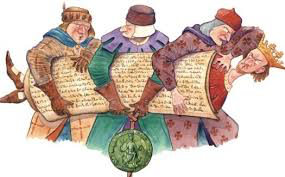 May 26 – 605 Augustine first Archbishop of Canterbury. Six centuries later the Archbishop of Canterbury will draft the Magna Charta.
May 26 – 605 Augustine first Archbishop of Canterbury. Six centuries later the Archbishop of Canterbury will draft the Magna Charta.
1215 English barons organized against King John. King John descends from Malcolm 3rd, King of Scots. ‘We will appoint as justices, constables, sheriffs, or other officials, only men that know the law of the realm and are minded to keep it well.’ – See more at: http://www.bl.uk/magna-carta/articles/magna-carta-english-translation#sthash.XnU3cAFI.dpuf
1424 The parliament convened by King James (later styled the 1st) approved the arrest of a number of the Scottish nobility – and also banned the playing of football. The ban was lifted then banned again 70 years later briefly.
1515 Regent John Stewart, 2nd Duke of Albany arrived at Dumbarton with a squadron of eight ships, including the James and Margaret, which James IV had lent to Louis XII of France, In 1515, after Albany had taken prisoner Lord Home, whose overgrown power and turbulent disposition had become dangerous to the state, Albany committed Home to the custody of the earl of Arrant, governor of the castle of Edinburgh. Arran, who disliked regent Albany, was easily persuaded by Home to retire with Home to the borders, where Home and Arran commenced hostilities, on which Arran was required to surrender himself within fifteen days, to avoid being proclaimed a rebel as Home and his brother had been. At the same time, the regent Albany, at the head of a select body of troops, and a small train of artillery, proceeded to invest the castle of Cadyow, the earl of Arran’s principal stronghold, and required its immediate surrender.
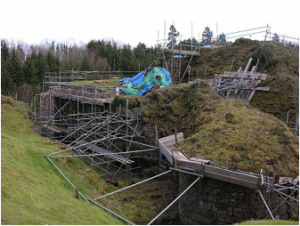 Cadzow Castle is largely covered by scaffolding, planks and plastic sheets. At the time it was built, the castle was known as The Castle in the Woods of Hamilton. It had a short life. It was visited by Mary Queen of Scots in 1568, but two years later was successfully besieged by the Earl of Lennox. web.undiscoveredscotland.com/hamilton/cadzowcastle/
Cadzow Castle is largely covered by scaffolding, planks and plastic sheets. At the time it was built, the castle was known as The Castle in the Woods of Hamilton. It had a short life. It was visited by Mary Queen of Scots in 1568, but two years later was successfully besieged by the Earl of Lennox. web.undiscoveredscotland.com/hamilton/cadzowcastle/
Arran’s mother, the Princess Mary, aunt of Albany, resided at that time in Cadyow castle, and on Mary’s solicitation the regent Albany consented to pardon Arran, on Arran returning to Arran’s duty, which Arran accordingly did. In the following year, at the instigation of the English king, Arran, who still aimed at the regency, associated with the earls of Glencairn, Lennox, and the majority of the noblemen and gentlemen of the west, and seized the royal magazines at Glasgow. Arran and Earls also sent a body of troops to take possession of some French ships, with supplies of arms and ammunition for Albany, which had arrived in the Clyde. The vessels, however, had sailed, but a quantity of gunpowder and other ammunition landed from them, Arran brought to Glasgow, where, lest it might fall into the hands of Arran’s enemies, the powder was thrown into a draw-well. The Earl of Arran, at the same time, by a stratagem made himself master of the castle of Dumbarton, expelling Lord Erskine, the governor. An accommodation, however, between the regent Albany and Arran, the leaders of the malcontents, was soon brought about, chiefly through the means of Forman, archbishop of Glasgow.
 1547 Earl of Athol; One of 24 Lords of the Congregation. John Stewart, 4th Earl of Atholl married, firstly, Lady Elizabeth Gordon, daughter of George Gordon, 4th Earl of Huntly and Elizabeth Keith, before 26 May 1547.
1547 Earl of Athol; One of 24 Lords of the Congregation. John Stewart, 4th Earl of Atholl married, firstly, Lady Elizabeth Gordon, daughter of George Gordon, 4th Earl of Huntly and Elizabeth Keith, before 26 May 1547.
Keith tartan 2 sets of parallel black stripes, on dark green
1564 John Calvin, Reformer, died. Associate to John Knox, Minister in Scotland.
1599 John Davidson, minister at Preston Pans, charged to compear before the council on the 26th , and answer for the same, and was by the king [James 6th] committed prisoner to the castle of Edinburgh; 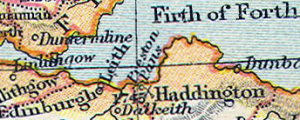 but, on account of bodily infirmity, this place of confinement was changed to his own dwelling house; after which he obtained liberty to exercise his office in his own parish. Previously, someone proposed, Whether ministers should vote in parliament in the name of the church. Mr. Davidson entreated them not to be rash in concluding so weighty a matter; he said, “Brethren, ye see not how readily the bishops begin to creep up.” Biographia Scoticana by Howie. Map with Preston Pans in the middle, east of Edinburgh and Leith, north of Dalkeith and Haddington, on the Firth of Forth.
but, on account of bodily infirmity, this place of confinement was changed to his own dwelling house; after which he obtained liberty to exercise his office in his own parish. Previously, someone proposed, Whether ministers should vote in parliament in the name of the church. Mr. Davidson entreated them not to be rash in concluding so weighty a matter; he said, “Brethren, ye see not how readily the bishops begin to creep up.” Biographia Scoticana by Howie. Map with Preston Pans in the middle, east of Edinburgh and Leith, north of Dalkeith and Haddington, on the Firth of Forth.
1660 Charles II lands at Dover. (TG48-168). [Stewart, Drummond clan]
1662 Further act provided for the restitution and re-establishment of the ancient government of the Church by Archbishops and Bishops; the King (Charles 2nd) proceeded to make appointments. All acts providing for Presbyterian church structure, as far back as that of 1592, were disallowed; licenses were required of preachers and teachers, and all meetings and conventicles in houses which under the pretence of religious exercises may tend to the prejudice of the public worship of God in the churches and the alienating of the people from their lawful pastors and that duty and obedience they owe to Church and State were prohibited. YYMA 25. 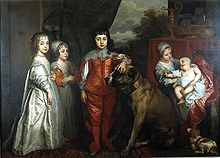 Part of the Test Acts to force the oblivion of the Presbytery and growth of the whatever religion the King willed. Painting of Charles 1sts’ children circa 1645. The future Charles II is depicted at centre, stroking the dog. Mary, Princess Royal (far left) Married William II, Prince of Orange (1626–1650) in 1641. Mary had one child: William 3rd of England, King of England (but William 2nd of Scots). James VII (of Scots) and II (of England) King of England, Scotland and Ireland on right. Married (1) Anne Hyde (1637–1671) in 1659, James had issue including Mary II Queen of England and Scotland, and Anne of Queen of England and Scotland; Henrietta Anne, Princess of England (baby) Married Philip I, Duke of Orléans (1640–1701) in 1661. Had legitimate issue. Among her descendants were the kings of Sardinia and Italy. Married (2) Mary of Modena (1658–1718) in 1673. Had issue.
Part of the Test Acts to force the oblivion of the Presbytery and growth of the whatever religion the King willed. Painting of Charles 1sts’ children circa 1645. The future Charles II is depicted at centre, stroking the dog. Mary, Princess Royal (far left) Married William II, Prince of Orange (1626–1650) in 1641. Mary had one child: William 3rd of England, King of England (but William 2nd of Scots). James VII (of Scots) and II (of England) King of England, Scotland and Ireland on right. Married (1) Anne Hyde (1637–1671) in 1659, James had issue including Mary II Queen of England and Scotland, and Anne of Queen of England and Scotland; Henrietta Anne, Princess of England (baby) Married Philip I, Duke of Orléans (1640–1701) in 1661. Had legitimate issue. Among her descendants were the kings of Sardinia and Italy. Married (2) Mary of Modena (1658–1718) in 1673. Had issue.
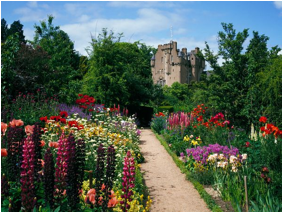 1799 – James Burnett, Lord Monboddo, Scottish judge (b. 1714) Crathes Castle, near Aberdeen, began in 1553 and lasted 43 years. The estate’s famed walled garden is divided into eight themed areas separated by Irish yew hedges, some of which are more than 300 years old. Photograph by Brian Lawrence/Getty travel.nationalgeographic.com/travel/countries/scotland-photos/#/crathes-castle Crathes sits on land given as a gift to the Burnett of Leys family by King Robert the Bruce in 1323. Alexander Burnett, who completed the construction of Crathes, began a new project, the early 17th century reconstruction of nearby Muchalls Castle. That endeavour was completed by his son, Sir Thomas Burnett. Crathes Castle served as the ancestral seat of the Burnetts of Leys until gifted to the National Trust for Scotland by the 13th Baronet of Leys, Sir James Burnett in 1951. Wikipedia.
1799 – James Burnett, Lord Monboddo, Scottish judge (b. 1714) Crathes Castle, near Aberdeen, began in 1553 and lasted 43 years. The estate’s famed walled garden is divided into eight themed areas separated by Irish yew hedges, some of which are more than 300 years old. Photograph by Brian Lawrence/Getty travel.nationalgeographic.com/travel/countries/scotland-photos/#/crathes-castle Crathes sits on land given as a gift to the Burnett of Leys family by King Robert the Bruce in 1323. Alexander Burnett, who completed the construction of Crathes, began a new project, the early 17th century reconstruction of nearby Muchalls Castle. That endeavour was completed by his son, Sir Thomas Burnett. Crathes Castle served as the ancestral seat of the Burnetts of Leys until gifted to the National Trust for Scotland by the 13th Baronet of Leys, Sir James Burnett in 1951. Wikipedia.
1826 The Dundee and Newtyle Railway chartered with an Act of Parliament received royal assent in 26 May 1826 and opened in 1831.[1] The railway originally ran between Dundee and Newtyle. Built to carry goods from Strathmore to the port of Dundee. Stations on the original line were at the back of Law tunnel, Baldovan, Baldragon, Auchterhouse, Balbeuchly Foot, Balbeuchly Incline, Balbeuchly Top, Auchterhouse, Hatton and Newtyle, Angus, Scotland, eleven miles long. Map of the railways in the 19th century, shows the track route north from Dundee to Forfar (the Shire seat). Forfar’s ancient name was Angus
Newtyle, Angus, Scotland, eleven miles long. Map of the railways in the 19th century, shows the track route north from Dundee to Forfar (the Shire seat). Forfar’s ancient name was Angus
1840 late in May. 1840 Scotland and the Gospel of Jesus Christ. Orson Pratt, one of the original Twelve Apostles. Elder Pratt climbed a hill above Edinburgh Castle to dedicate Scotland for missionary labor and to ask the Lord for two hundred souls in that place. This hill, connected in Scottish lore with the King Arthur legend, is known as “Arthur’s Seat,” but the many thousands of Latter-day Saints converted in Scotland ever after called it “Pratt’s Hill.” From the summit, Orson surveyed a city that had just experienced a half-century of rebuilding—the “Golden Age” of Edinburgh. The new, Classical-style city of 136,000, called “the Modern Athens,
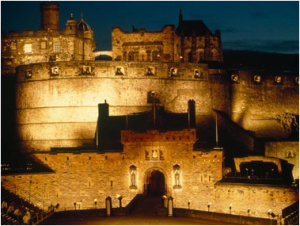 Edinburgh Castle. Castle Rock, whose vertical flanks rise above the Scottish city of Edinburgh, may have first served as a strategic stronghold around 850 B.C. For the past thousand years it’s been the site of Edinburgh Castle, the thick-walled fortress at the center of nearly every major conflict in Scotland’s history. Photograph by Jim Richardson. travel.nationalgeographic.com/travel/countries/scotland-photos/#/edinburgh-castle
Edinburgh Castle. Castle Rock, whose vertical flanks rise above the Scottish city of Edinburgh, may have first served as a strategic stronghold around 850 B.C. For the past thousand years it’s been the site of Edinburgh Castle, the thick-walled fortress at the center of nearly every major conflict in Scotland’s history. Photograph by Jim Richardson. travel.nationalgeographic.com/travel/countries/scotland-photos/#/edinburgh-castle
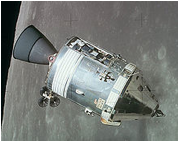 1969 – Apollo program: Apollo 10 returns to Earth after a successful eight-day test of all the components needed for the forthcoming first manned moon landing.
1969 – Apollo program: Apollo 10 returns to Earth after a successful eight-day test of all the components needed for the forthcoming first manned moon landing.
Apollo 15 CSM in lunar orbit.
2009 Utah is ranked 2nd highest (4.6% of the state population) among the 50 United States with the top percentages of Scottish residents (Wikipedia 26 March 2017 https://en.wikipedia.org/wiki/Scottish_Americans#Scottish_Americans_by_state ) 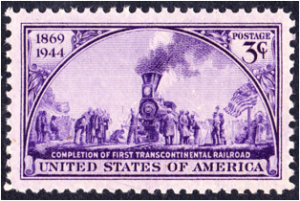 3 cent USA postage 1869 1944 Completion of first Transcontinental Railroad, 75th anniversary. How are the Scots in Utah doing? States where people marry young also often have high rates of recent marriage, which is expressed as the number of marriages per 1,000 men or women within the previous 12 months. States with high rates of recent marriage include Utah (28 marriages per 1,000 women and nearly the same for men), http://www.pewresearch.org/2009/10/15/the-states-of-marriage-and-divorce/ OCTOBER 15, 2009
3 cent USA postage 1869 1944 Completion of first Transcontinental Railroad, 75th anniversary. How are the Scots in Utah doing? States where people marry young also often have high rates of recent marriage, which is expressed as the number of marriages per 1,000 men or women within the previous 12 months. States with high rates of recent marriage include Utah (28 marriages per 1,000 women and nearly the same for men), http://www.pewresearch.org/2009/10/15/the-states-of-marriage-and-divorce/ OCTOBER 15, 2009
Disclaimer: The author of each article published on this web site owns his or her own words. The opinions, beliefs and viewpoints expressed by the various authors and forum participants on this site do not necessarily reflect the opinions, beliefs and viewpoints of Utah Standard News or official policies of the USN and may actually reflect positions that USN actively opposes. No claim in public domain or fair use. © John Choate
Utah Standard News depends on the support of readers like you.
Good Journalism requires time, expertise, passion and money. We know you appreciate the coverage here. Please help us to continue as an alternative news website by becoming a subscriber or making a donation. To learn more about our subscription options or make a donation, click here.
To Advertise on UtahStandardNews.com, please contact us at: ed@utahstandardnews.com.


Comments - No Responses to “May 26th Scots’ Book of Day”
Sure is empty down here...